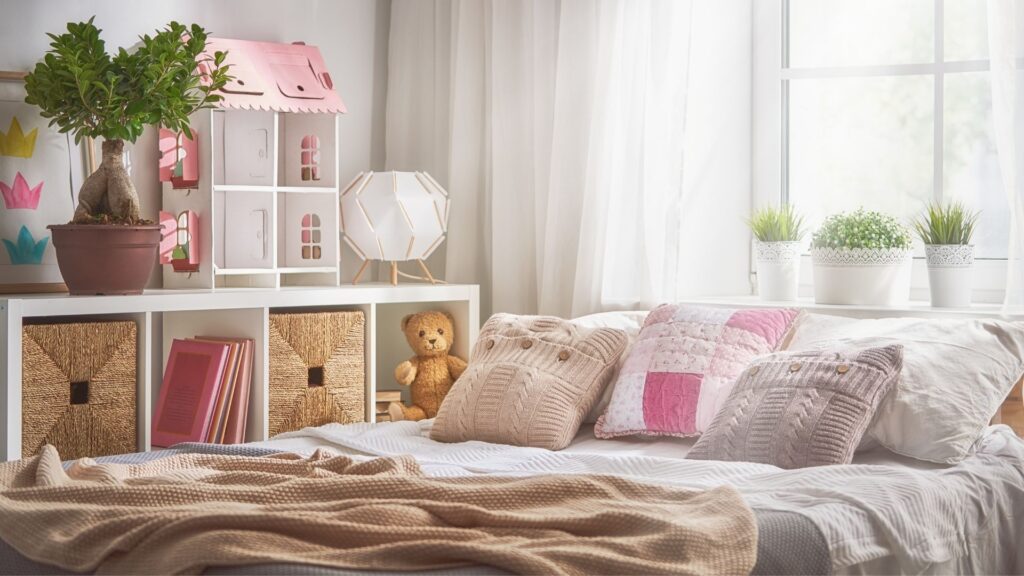
Creating Happiness for Your Kid s Zone with Furniture
Children are highly mobile beings. They aren’t going to stay in one spot for very long without getting into mischief. Anything that is present in their immediate surroundings should be chosen with these qualities in mind: practicality, durability, and timeless elegance. They certainly won’t stop growing up. That goes without saying about a room for themselves and the furniture for their room.
It might be difficult for parents to find the correct pieces of furniture for their children’s rooms. Especially for first-time parents, picking out kids’ furniture like bunk beds, changing tables, and dressers might feel like an exercise in futility. But parents should still do their best to create a nurturing atmosphere at home, since research shows that children’s development is greatly influenced by their surroundings.
This article provides advice from Sirwiss-affiliated bespoke furniture designers and visual aids to help parents visualize the advice.
The Best Way to Furnish a Child’s Room
Creating a space for your child’s play and development can and should be a pleasurable experience. Nevertheless, it can be a difficult task. After all, creating an attractive, functional space that your child will enjoy for years to come is quite a challenge! Whether you’re starting from the beginning or hoping to enhance an existing space, you’ll find a healthy dose of inspiration here!
1. Keep It Simple
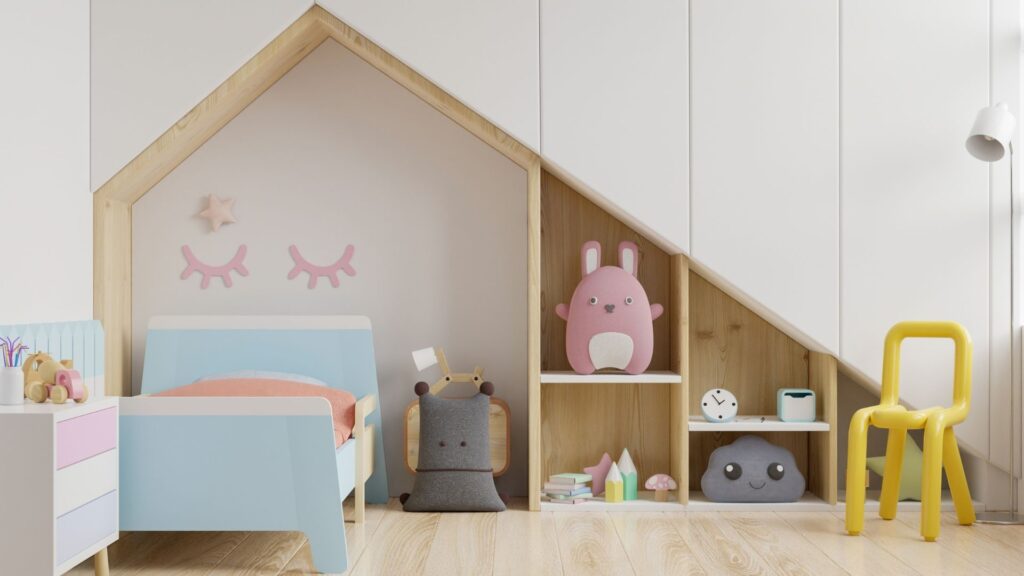
Less is more when it comes to decorating a child’s bedroom. Keeping the room’s design and furnishings uncomplicated and minimal will provide for greater play space and a blank slate that can be readily modified as the child gets older. A bed with a house-shaped frame can be used as a play area, and well-loved toys can be displayed on open shelves for decorative effect. Be mindful of what the furniture is constructed from. Natural wood, MDF, or plywood are all great options for a kid’s bedroom. All cabinets should have a thickness of at least 15 mm (about 0.59 in), therefore be sure to inquire with the manufacturer about this.
2. They Need to Play
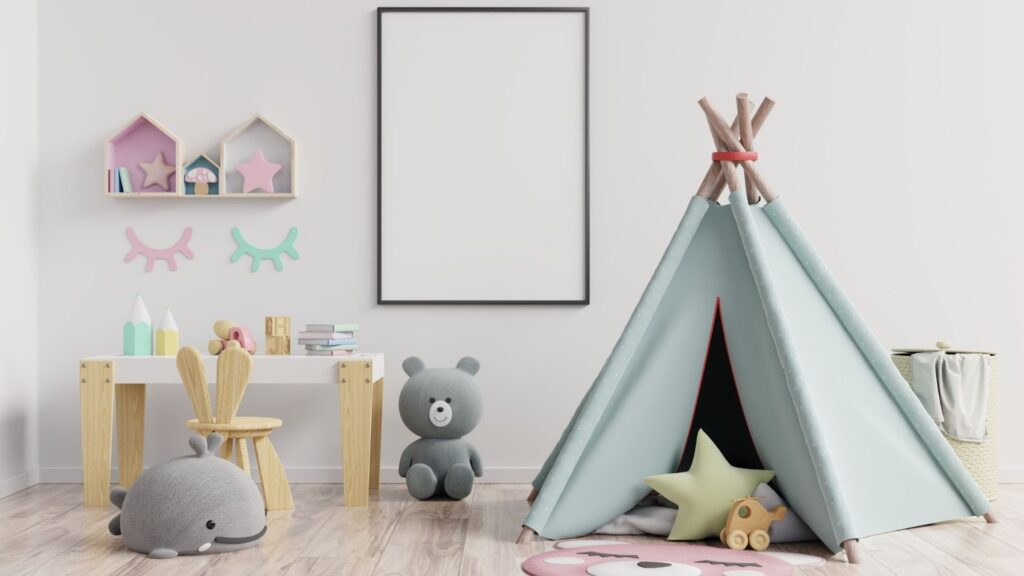
To create a room that your child will enjoy, consider emphasizing their favorite activity: playing. Consider a chalkboard wall or an easily updatable art gallery for your child to display his or her beloved works of art. A built-in rock-climbing wall, bunk bed slide, or ceiling-suspended cargo net are also excellent options that encourage play and help burn off excess energy before nighttime.
3. Use Your Kid’s Room to Its Full Potential
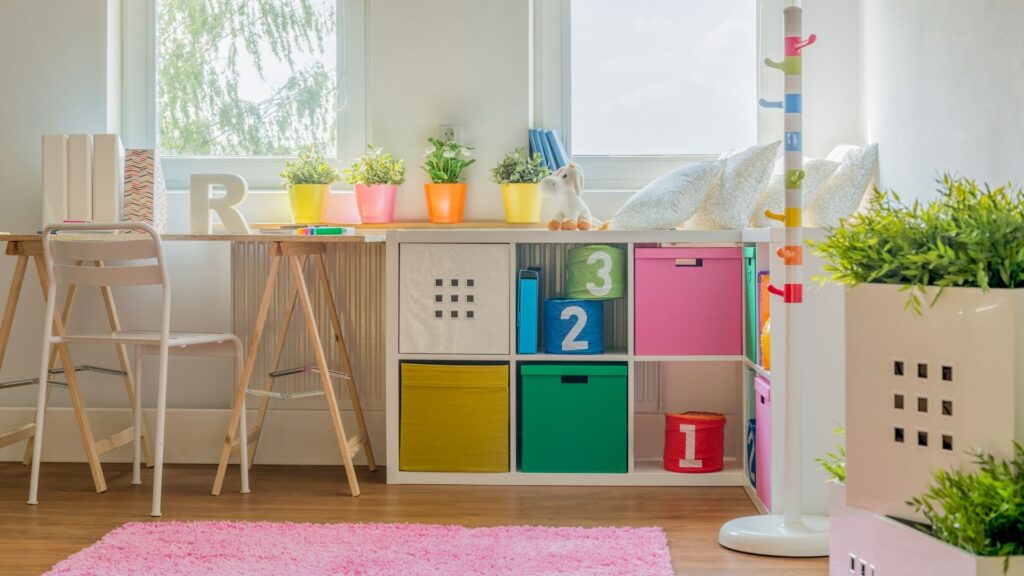
If your child has a tiny bedroom with a vast imagination, you must maximize their space. An additional play zone that can be easily changed into a reading nook or lounging area for a future tween. We suggest deciding early on where the electrical outlets will go in a child’s bedroom so that the area can grow with them. A bed, or at least a desk with a lamp, will replace the current cot in its current location. You can get help with this from an interior designer or lighting expert.
4. Save Space by Doubling Up
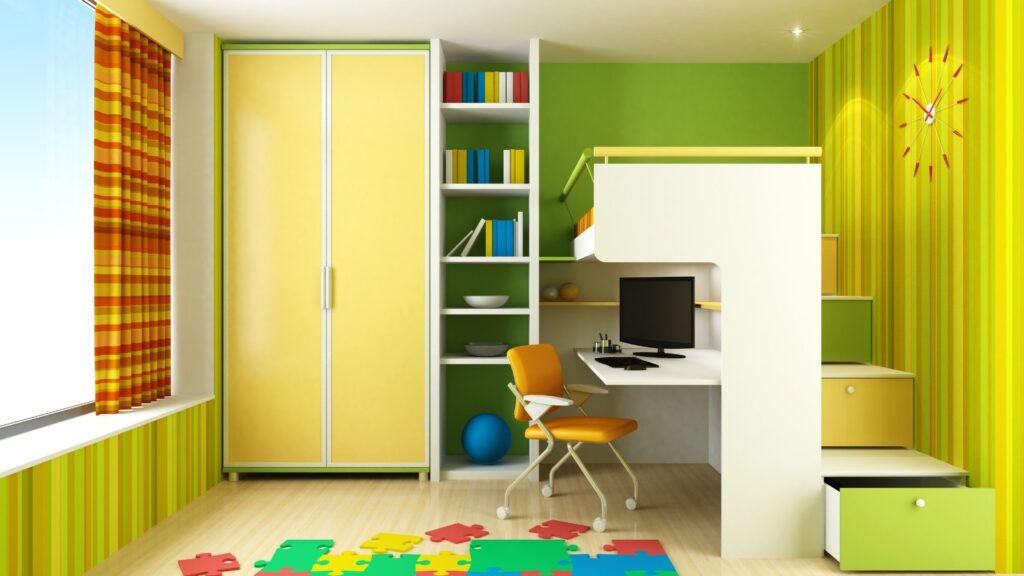
From their toys, games, and literature to their ever-changing, multi-sized wardrobes, children come with a lot of belongings. Need assistance organizing the clutter? Hooks, wall-hugging book rails, under-bed storage containers, and furniture with built-in storage are excellent options that can increase your storage space twofold. When designing children’s bedrooms, prioritize storage solutions that can expand with the child. This includes wardrobes with adjustable shelving and hanging spaces, drawer space beneath the bed, ample shelving, and, of course, ideas for toy storage. When they are young, shelving can house items such as toys, games, and crafts; as they get older, it can create room for books, schoolwork, and gaming gear.
5. Be Creative with Color
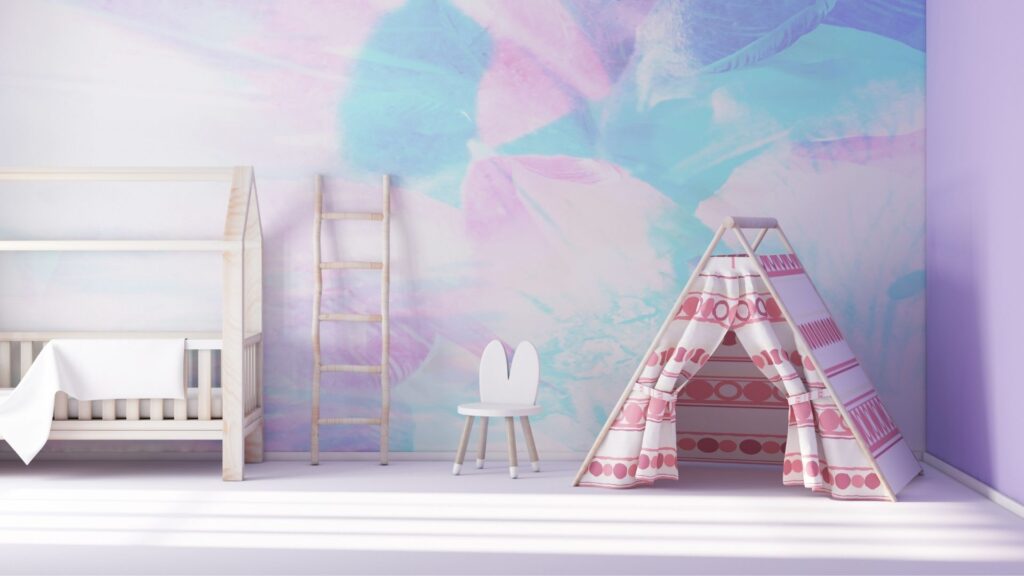
The design of a child’s bedroom should be functional, but it should also include some playful touches. Color is fascinating to children but picking the proper one can be difficult. Your child may be in love with everything pink right now, but that may not be the case in a few years. The prospect of repainting an entire room is enough to give anyone pause about making a long-term commitment to the hue. Lamps with patterns and pillows with the same look great in this room. They come in a number of different color combinations that may be readily swapped out as the child’s aesthetic preferences develop.
6. Incorporate Pattern and Texture
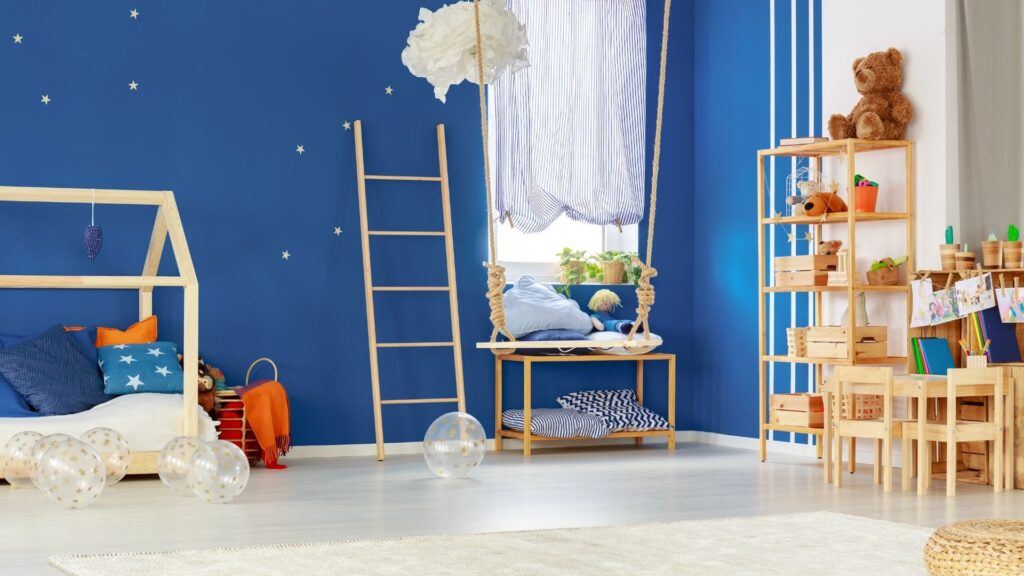
What makes the kids’ bedroom look so, well, Pinterest-worthy? The careful use of pattern and texture is most likely responsible. These important decorating tools are a professional designer’s secret weapon, taking a room from blah to breathtaking with just a few added elements, using a power combo of rich, textural layers and bold, graphic pattern to create a well-balanced and visually interesting space with no color at all. We do not recommend covering your child’s bedroom in overly themed décor that is difficult to replace whenever possible. Instead, use a gently patterned wallpaper that will serve as a neutral and interesting backdrop for the space. Designs like sailboats, roses, and even aeroplanes work well.
7. Keep Little Hands and Minds Busy
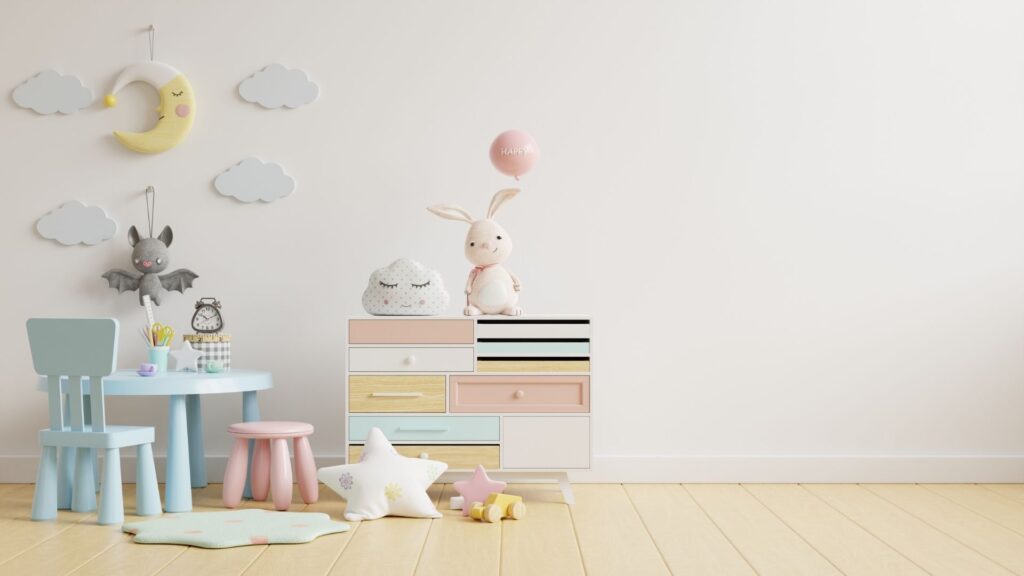
If space permits, a child-friendly workspace is necessary. Providing your child with a space to color and create will not only keep them occupied but may also promote their physical and mental growth. When your child is older, a personal workspace can be useful as a place to study and complete assignments in peace. Using the same principles when designing children’s bedrooms as you do when designing your own bedroom will ensure that their room is just as relaxing as yours. In addition to decluttering, you should also consider ambient lighting, such as table lamps, and layering, such as quilts and pillows. The expectation is that they will retreat to their chambers to relax.
8. Think: Cleanability
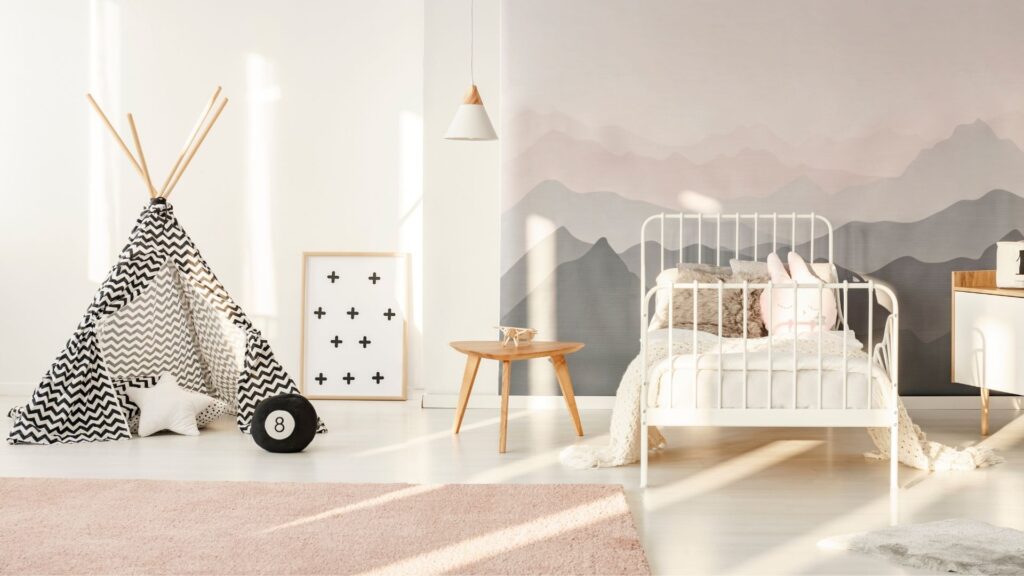
Wallpaper in a child’s room can be a lovely accent, but it quickly becomes unsightly when fingerprints and other smudges are left all over it. Wipeable paints, which come in both glossy and chalky finishes, are a perfect option in this situation. We advise having your sofas, rugs, curtains, and other soft furnishings treated with a stain protector to protect them from accidental stains. We provide this service to our customers, although stain guard products are also widely available on the web.
To make a child’s room comfortable, it is essential to furnish it with layers, just as you would any other living or sleeping space in your home. Of course, layers can include comforters, pillows, blankets, and throws, but it’s also essential to add comfort underfoot with rugs. And don’t overlook bedroom lighting ideas; they can add layers of light that are both inviting and functional.